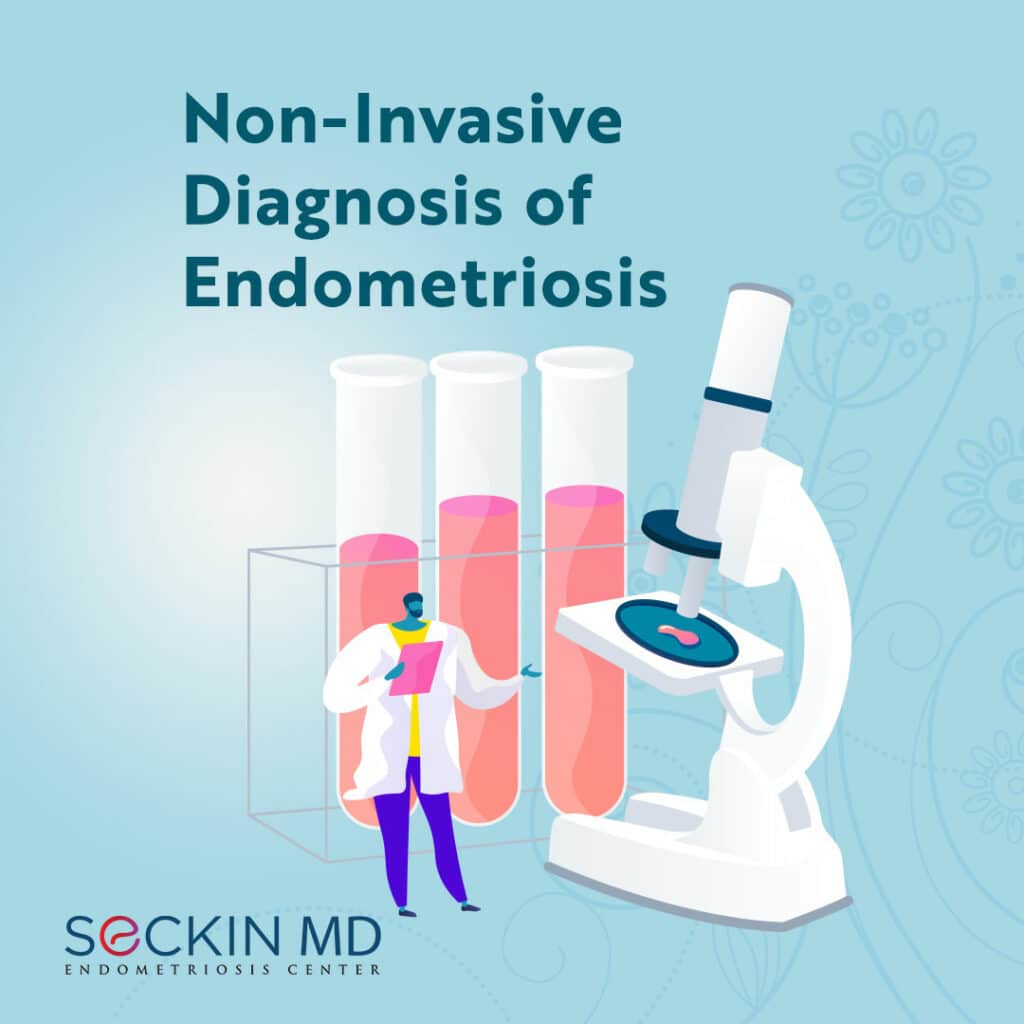Non-Invasive Diagnosis of Endometriosis

The definite diagnosis of endometriosis requires minimally invasive laparoscopic deep excision surgery. Imaging techniques such as magnetic resonance imaging (MRI) and ultrasound provide vital information. However, they cannot, on their own, confirm a diagnosis at the moment.
There has been a push to develop reliable imaging methods that can non-invasively confirm endometriosis. 3D Transvaginal and transabdominal pelvic ultrasonography together with a sound knowledge of the pelvic anatomy can help predict conditions such as deep infiltrating endometriosis.
The American Society for Reproductive Medicine (ASRM) and the British Society for Gynecologic Endoscopy recently hosted a journal club with Dr. Susanne Johnson from Southampton, UK, and Dr. Valerie Flores from the Yale School of Medicine. The aim was to find new tools for non-invasive endometriosis diagnosis.
Challenges in current diagnosis of endometriosis
Dr. Flores stated that endometriosis can take between six to 11 years from the onset to a final diagnosis. Also, surveys indicate that over 65% of women with endometriosis receive a misdiagnosis while 46% of them had to see at least five doctors before getting a confirmed diagnosis. The reasons for this include non-specific symptoms that do not go hand in hand with disease severity, differences in how much pain people feel, and difficulties in talking about periods with others.
Endometriosis is also a complex, systemic disorder. Many researchers think that stem cells, inflammatory cytokines, and microRNAs may play a role in endometriosis developments besides Samson’s theory of retrograde menstruation.
Biomarkers for non-invasive diagnosis of endometriosis
According to Dr. Flores, non-invasive diagnosis can be reached using imaging techniques, endometrial biomarkers, and serum biomarkers. Potential endometrial biomarkers include:
- angiogenesis and growth factors
- cell adhesion molecules
- DNA repair molecules
- immuno/inflammatory markers
- myogenic markers
- nerve growth factors
- tumor markers such as CA 125
However, given the differences in these markers, none of them can confirm a diagnosis on its own.
BCL-6 is fast becoming a preferred biomarker for endometriosis diagnosis. Women with confirmed endometriosis have high BCL-6 levels, particularly in the secretory phase of the menstrual cycle. There is a BCL-6 test kit that is available, which indicates inflammation in the uterine lining.
The levels of serum biomarkers such as VEGF, pro-inflammatory cytokines, CA 125, and combinations of these are often high in endometriosis patients. However, differences in the specificity and sensitivity of these tests mean that these markers alone can also not confirm a diagnosis of endometriosis.
Recently, researchers have focused their attention on short, non-coding RNA molecules known as microRNAs as reliable serum biomarkers. microRNAs are short nucleic acids that are differentially expressed under various conditions.
Dr. Flores looked at over 30,000 microRNA candidate molecules and discovered that some are at least 10-times higher in endometriosis. She found that miRNA125 and miRNA160 had the highest expression levels whereas miRNA6755 and miRNA3613 were the lowest. Dr. Flores found that the expression levels of miRNA125, miRNA342, and miRNA451 can be potential diagnostic markers for endometriosis.
Dr. Flores expanded the study to over 100 patients who had had laparoscopic excision surgery for other diseases. Looking at the different phases of the menstrual cycle, she found six more microRNAs that were differentially expressed in these women.
Biomarkers for predicting response to medical therapy
Progestin-based therapies are often first-line therapies for treating endometriosis. However, this type of treatment fails in as much as a third of women with the disease because of progesterone resistance. The idea is that this could be due to a decrease in progesterone receptors.
Dr. Flores took a sample of 52 women who were having surgery for endometriosis. She studied the expression of the progesterone receptor in these patients. She saw that the so-called H score could predict response to progestin-based therapy.
Ultrasound for non-invasive diagnosis of endometriosis
Doctors have traditionally used ultrasound to look at the uterus for signs of adenomyosis and ovarian endometrioma. Dr. Johnson believes that ultrasound can also be useful in finding deep endometriosis, frozen pelvis, and site-specific tenderness. In the pelvis, deep endometriosis usually occurs in the vagina, ligaments, and bowel towards the back side of the body and the bladder and ureter towards the front.
Ultrasound can reveal features such as an anteverted, anteflexed uterus with diffused adenomyosis. It can also show ovarian endometriomas with adhesions while also showing “kissing” ovaries, according to Dr. Johnson.
Dr. Johnson also spoke about the “sliding sign” technique in ultrasonography. The sliding sign helps to determine uterorectal adhesions and can be a predictor for deep infiltrating endometriosis in the rectum, she said. It also indicates the obliteration of the pouch of Douglas (negative sliding sign). In a normal sliding sign, the uterus and bowel organs are able to move independently in opposite ways whereas in an abnormal sliding sign, the uterus, bowels, and the endometrioma all move together.
Overall, there is definitely progress being made in non-invasive techniques for the diagnosis of endometriosis. These can at least give more insight before surgery, or afterward, for monitoring purposes. Still, the only sure method of diagnosis for endometriosis is through biopsy during surgery and pathological confirmation.
Was your endometriosis diagnosis delayed? Please share your experience by leaving a comment on our post on Facebook or Instagram
Get a Second Opinion
Our endometriosis specialists are dedicated to providing patients with expert care. Whether you have been diagnosed or are looking to find a doctor, they are ready to help.Our office is located on 872 Fifth Avenue New York, NY 10065.
You may call us at (646) 960-3080 or have your case reviewed by clicking here.